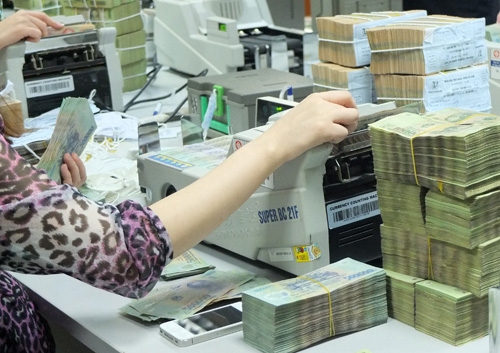 Economy
Economy

Experts have suggested the central bank should further loosen its monetary policy to reduce lending interest rates in a move to support businesses.
 |
| Experts from HSBC and Vietcombank’s Securities Co have forecast that the lending interest rate will increase by some 50 basis points this year. — Photo dantri |
HÀ NỘI (VNS) — Experts have suggested the central bank should further loosen its monetary policy to reduce lending interest rates in a move to support businesses.
After hitting a two-year high of 8.35 per cent per year recently, the interest rate still shows no sign of cooling down, undermining the country’s efforts to help the economy recover over the past year.
Experts from HSBC and Vietcombank’s Securities Co have forecast that the lending interest rate will increase by some 50 basis points this year.
Lê Xuân Nghĩa, director of the Business Development Institute, was concerned, saying if the interest rate increases again, all the country’s efforts to restore the economy could fail.
Former central bank governor Lê Đức Thúy also said hikes in interest rates may limit businesses in Việt Nam from expanding this year. Interest rates went up at the end of 2015, and this trend is continuing into 2016 as banks face liquidity troubles.
Rates continue to climb, possibly by 1-2 per cent this year compared with the average in 2015. Thus, it is obvious that enterprises cannot expand operations normally as they did last year, Thúy said.
Thúy estimated that increases in deposit rates could raise the average long-term lending rate to 11 per cent per year, while a number of loans could bear higher rates as well.
Commercial banks have so far attributed the interest rate hike to anticipated increases in inflation, higher capital demands and the review of Circular 36, which may reduce the percentage of short-term capital used for medium- and long-term lending to 40 per cent from the current 60 per cent.
However, experts identified G-bonds as the main cause of the interest rate hike.
According to Nghĩa, the market’s interest rate curve depends on the interest rate of G-bonds.
Other interest rates cannot go down when the interest on G-bonds goes up, Nghĩa said, adding that commercial banks have poured more money into G-bonds, which have a high interest rate and zero risk. Currently, banks hold some 80 per cent of the total outstanding G-bonds.
Bùi Quốc Dũng, director of the Monetary Policy Department under the State Bank of Việtnam, also named G-bonds as one of the major factors that exert pressure on interest rates.
According to Dũng, the yields of five-year G-bonds last year soared to nearly 7 per cent per year from 5.5 per cent earlier, coupled with a higher issuance volume this year. This will weigh heavily on medium- and long-term interest rates.
To reduce interest rates, Nghĩa suggested the central bank should loosen its monetary policy by reducing the compulsory reserve ratio and restricting the issue of bills to withdraw money.
The central bank should also actively take part in the inter-bank market to stabilise the market’s interest rate, Nghĩa said.
Besides, Nghĩa said, the government should adopt strict measures to reduce the budget deficit, which will help reduce mobilisation through G-bonds.
However, if the monetary policy is further loosened, money must be controlled to flow into the right industries to help the economy further recover, while successfully controlling inflation, Nghĩa said.
Experts also expected the Circular 36 draft to reduce pressure on capital and interest rates for domestic commercial banks as the regulation could allow joint venture and wholly foreign-owned banks in Việt Nam to use up to 35 per cent of their short-term funding to buy G-bonds, a considerable rise from the current 15 per cent. — VNS